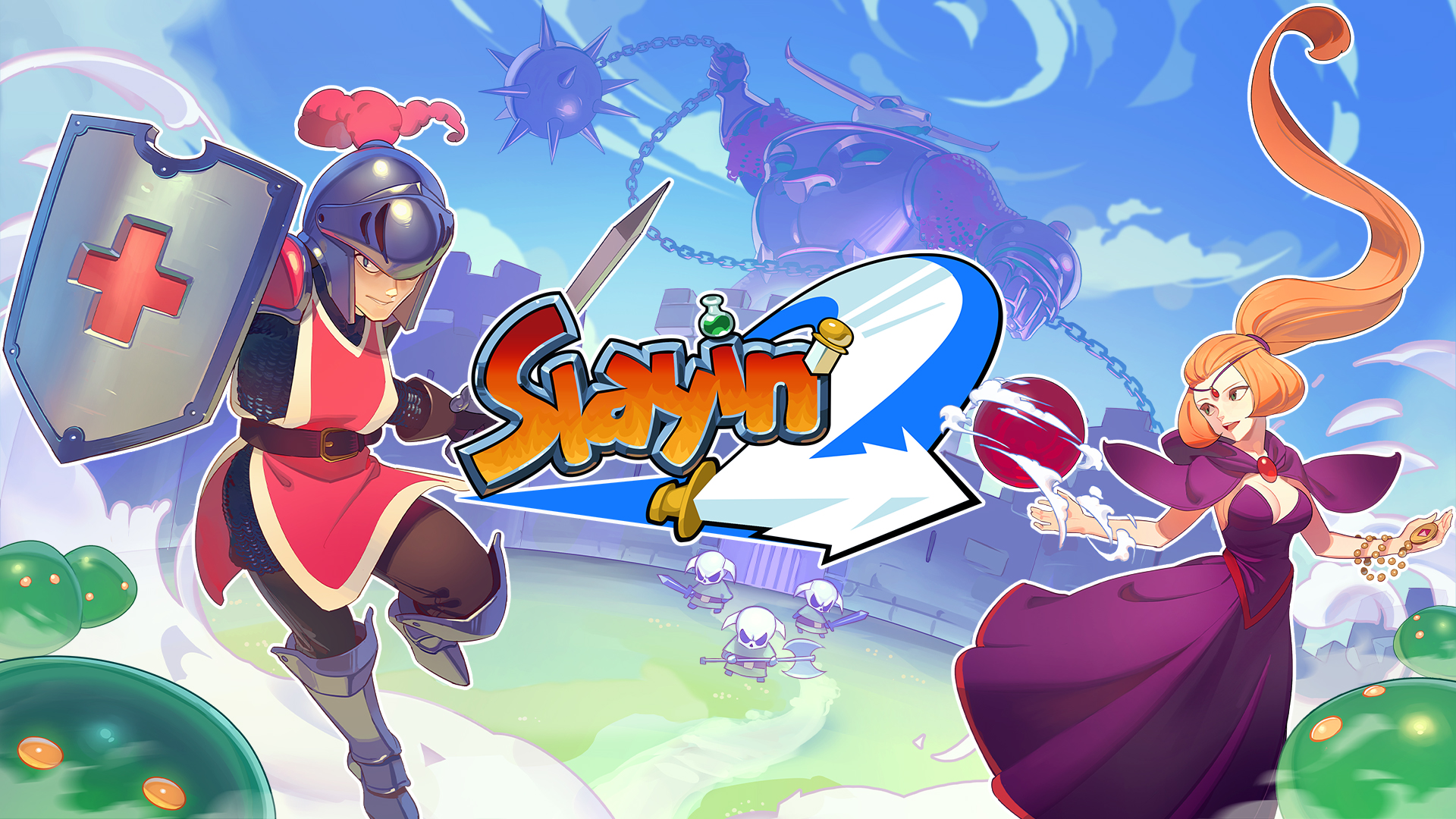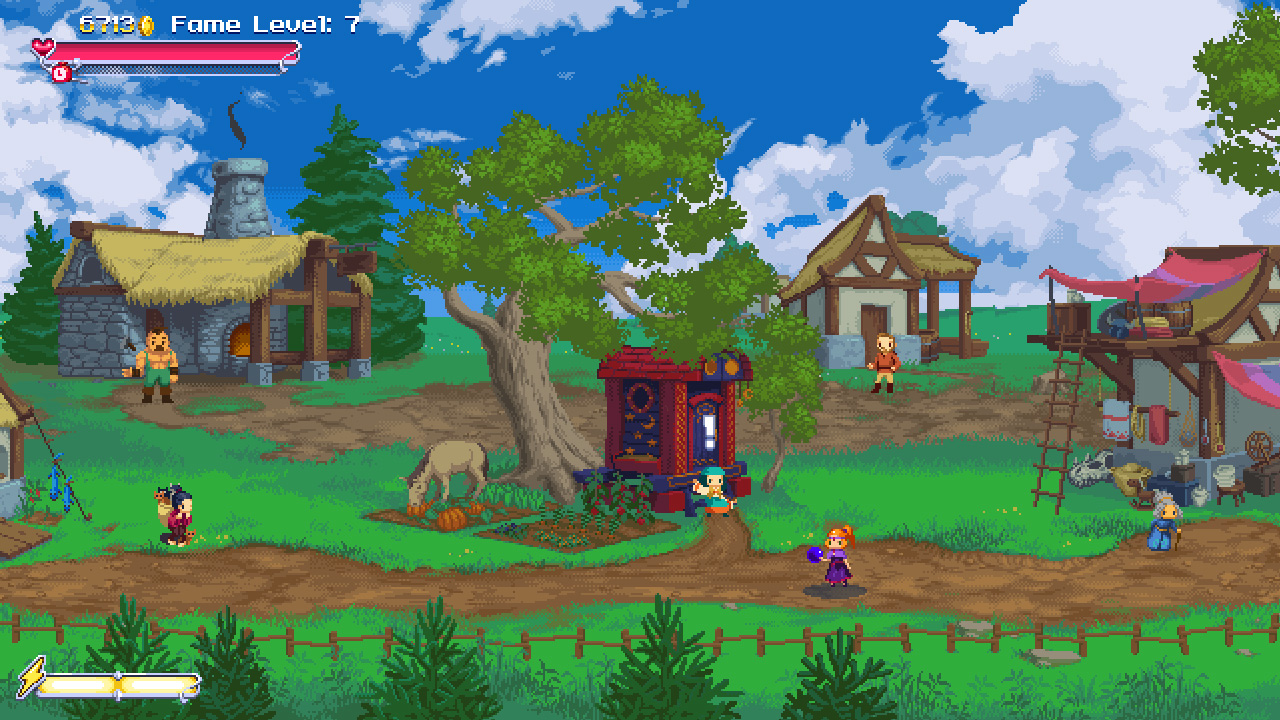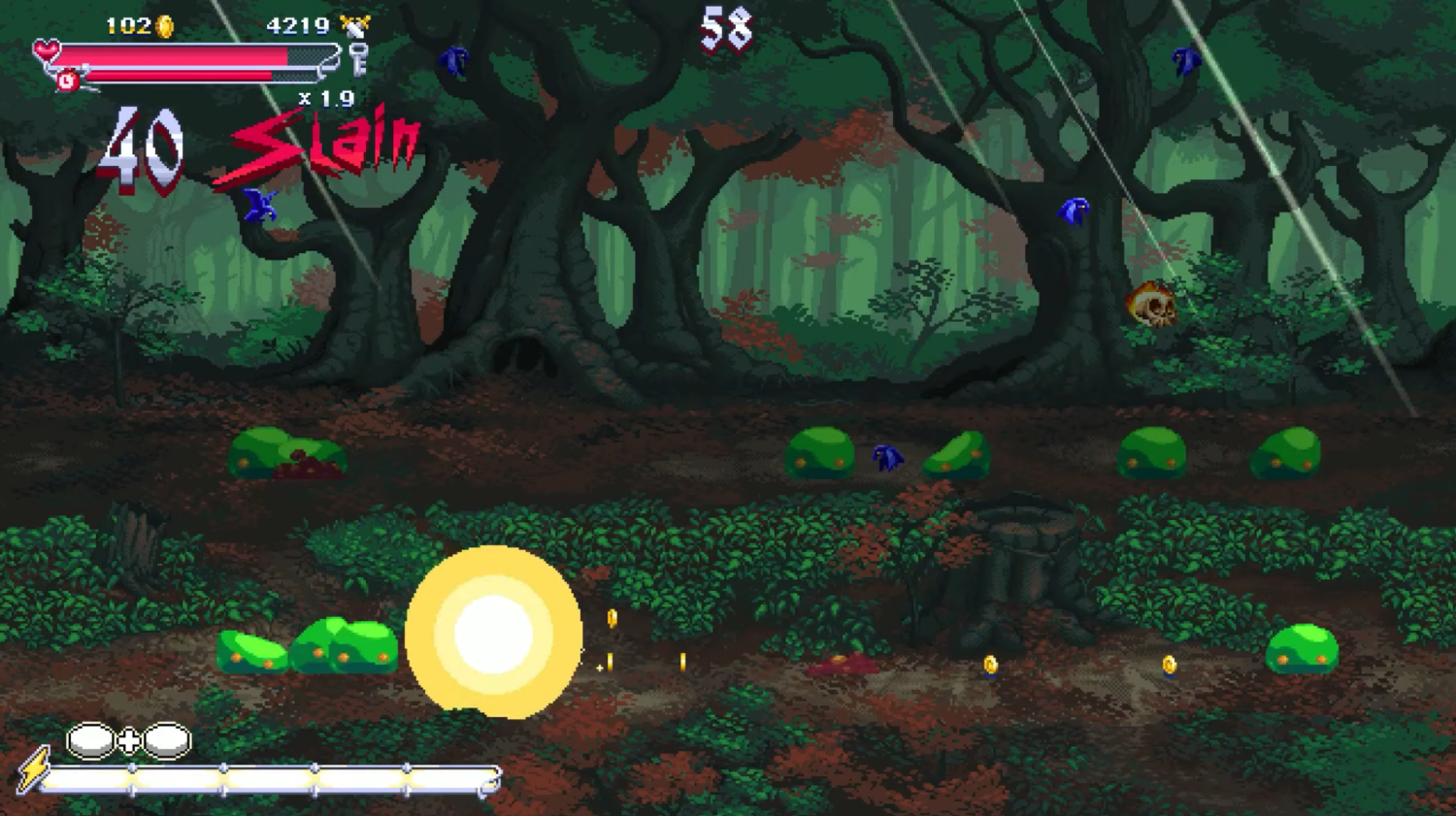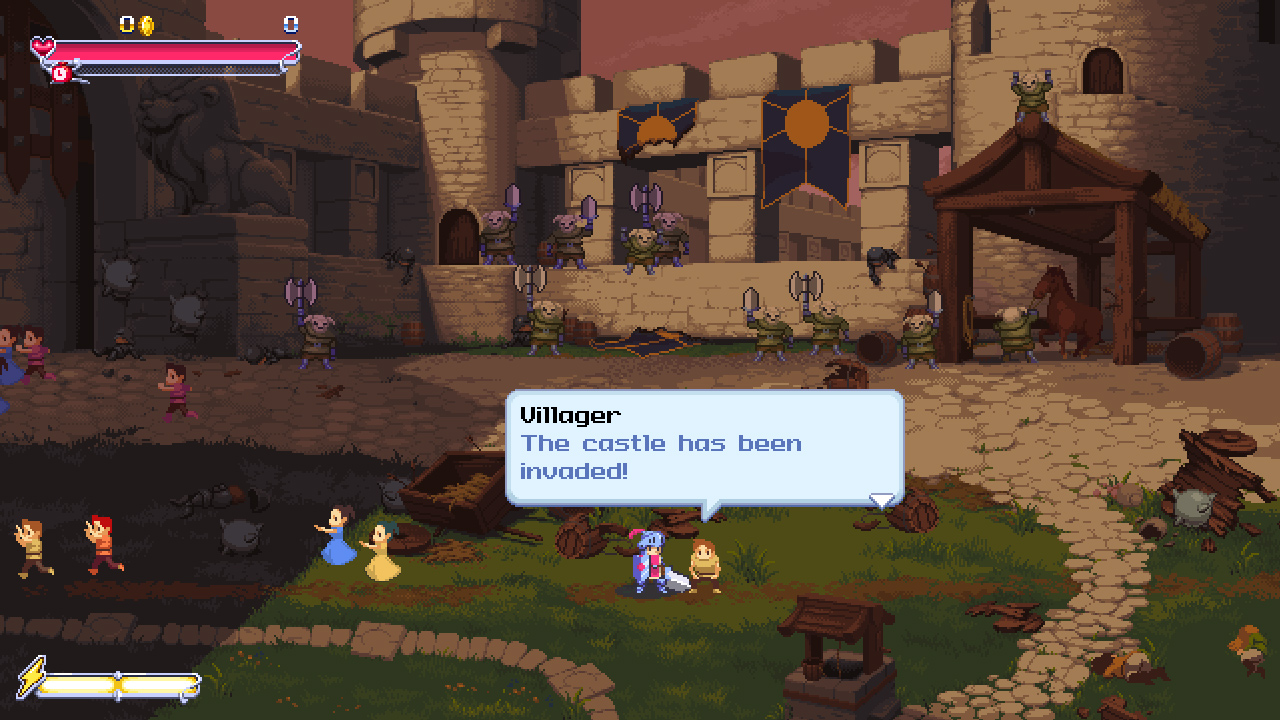Slayin 2 is the sequel to Slayin, an arcade adventure that was released on mobile in 2013. Slayin 2 isn’t unlike a mobile arcade title. Its pixelated graphics, synthetic soundtrack, and simplistic controls are easily translatable between console and mobile devices.

Slayin consists of 2D levels where the player can move right to left to attack monsters, but the sequel now has a new plane that adds a bit of dimension to each level. Still, the game is fairly limited, with a lack of dynamic combat mechanics or strategy. Which makes me question if more couldn’t have been done to make this a more addictive title.
We’ve all played games that handle the same as Slayin 2. Top-down versions are some of the original Legend of Zelda titles. Avoid enemies, stabby-stab, and hopefully not die. It was easy, and save for the occasional power-up move, it wasn’t much to wow anyone. With all of that said, Slayin 2—when juxtaposed to its predecessor—feels like a game that’s trying to grow with the new platform. There is a story level-to-level to explore, the added plane to fight along gives the player more range of motion, and the couch co-op gives you an upper-hand against enemies. These enemies even have variety—some bounce towards you in all their slimy glory, some hang above you and shoot at you, some float and charge at you. Taking them out is as simple as pushing forward to charge your sword at them. However, just like a classic arcade title, your only option for avoiding taking damage is to jump out of the way in time.

While some levels side-scrolled so you could walk around, meet NPCs, and experience the story; the actual levels with combat gameplay were in limited, one frame settings. These small settings added to the difficulty, because I couldn’t run away from enemies, but it wasn’t all that entertaining for me. I would have much preferred adventuring through the demolished towns and outskirts to stumble across monsters and feel as though I was reaching a goal with the boss battle waiting for me at the end.
Beyond level construction, simple things were still missing from the title, and it had little to do with the actual gameplay. I couldn’t back out of the level selection screen to the main menu, which is frustrating if you want to play the arcade mode instead of progress in the story. Meaning, anytime I wanted to change up what I was doing, I had to completely quit out of the game to get back to the start. I also couldn’t skip the cinematic opening, no matter how many times I launched the title. So if I restarted the game, just to change modes, I had to sit through that 2 minute cutscene—which was just a series of characters flashing around—until I could finally make the selection I wanted.

By the time I got to where I wanted to be, my desire to be there had lessened. I’m not that impatient, but having a natural flow and process for the end-user keeps our retention up. Maybe I’m an idiot, but I button mashed a lot to try to find a way back, and it just wasn’t happening. A big part of UX relies on focusing on how the user can easily navigate to the parts of the game they want to experience—and in modern UI, I’ve become quite accustomed to the back button helping me out in a pinch. Even in a mobile game, I would expect this, as back button commands are just as common with iOS and Android.
When you start the game, you’re given the option of 1-2 players, and as you play through levels, there is a command at the bottom to connect a second player. However, when I connected another Joy-Con to try the second player mode, while at the level select screen, it didn’t seem to do anything. Multiplayer did work when I chose it from the beginning. But it made me wonder why that was even an option from the level select if you can’t tag in a friend at any point?

There were a series of characters you could choose from with varying special moves, speeds, and movement patterns. The ones you unlock later were far more interesting to the first character you have in the beginning. I don’t consider this a fault, however. It’s common for the game to start you off with the most vanilla character before allowing you the chance to try out the trickier ones. But it made my interest after the first few levels waiver just a little. Especially when I would get stuck on a boss, and I had a feeling the key was co-op or a completely different character.
It might be fair to say that an eventual Slayin 3 could be a interesting playthrough, with what the devs could learn from this jump to console. But I have to wonder what happened in the playtest phase to miss the UI navigation issues. You can kill time with Slayin 2, but it didn’t stand out to me above other arcade titles of its kind.
https://www.youtube.com/watch?v=rynaC2v0Kkk
Review: Slayin 2 (Nintendo Switch)
Average
Slayin 2 has some UI issues, and its gameplay doesn’t stand out for me. However, if you’re looking for a game to just play while passing time, you could certainly play worse.


